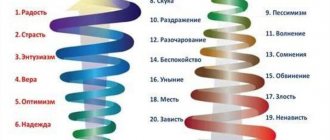What are psychological levels
Psychological levels are round price values that act as key levels. Such non-technical levels form strong support and/or resistance.
Psychological levels of support and resistance arise due to human psychology: traders, like all people, like to simplify things; It is also easier for them to operate with integers. It is not surprising that traders often use whole/round numbers as entry, exit or stop levels, and this, in turn, affects the market situation as a whole.
Psychological levels in trading
In the traditional market, traders often use the term "double zero levels": for example, 1.31000 in the EUR/USD market, 1.57000 in the GBP/USD market, or 132.00 in the GBP/JPY market. But depending on the market and the asset price, psychological levels can be different values. The chart below shows the “double zero levels” and their impact on the dynamics of the USD/JPY exchange rate:
Psychological levels on the USD/JPY chart
Some traders add more variety to this strategy by focusing on the numbers right between the whole numbers. For example, levels such as 1.31500 on the EUR/USD chart or 131.50 on the GBP/JPY market can often have the same impact as double zero levels.
Traders note that at such key levels there is a certain suspension of the trend in price growth or decline. For example, the so-called “fifties” levels are marked below on the USD/ZAR chart:
Psychological levels on the USD/ZAR chart
Note that many of the price movements in the chart above occur around one of these levels. Therefore, traders pay attention to these levels when analyzing support and resistance ranges. The chart below shows price fluctuations at psychological levels of the USD/JPY market:
Price fluctuations at psychological levels
Thus, these lines act as psychological levels of both support and resistance. It is worth noting that not each of these round marks will serve as support (or resistance), but such examples are enough to pay attention to them when trading.
Levels of the human psyche
The initial level of the human psyche is unconscious. The unconscious is divided into the individual unconscious and the collective unconscious.
The individual unconscious is mostly associated with instincts, which include the instincts of self-preservation and reproduction, territorial instinct and others.
The basic concept of the collective unconscious was developed in the thirties and forties of the 20th century by the Swiss psychologist C. G. Jung, who in his work “The Structure of the Soul” and in a number of others said that in the depths of the human soul lives the memory of the history of the entire human race, that in a person, in addition to the personal properties inherited from his parents, the properties of his distant ancestors also live.
The collective unconscious, in contrast to the individual (personal unconscious), is identical in all people and forms the universal basis of the mental life of each person - the deepest level of the psyche.
Jung figuratively compares the collective unconscious to the sea, which is the precondition of every wave. Likewise, the collective unconscious is a prerequisite for each individual psyche. Processes of “psychic penetration” occur all the time between an individual and other people. The collective unconscious is expressed in archetypes - the most ancient mental prototypes, directly embodied in myths.
The subconscious includes those ideas, desires, aspirations that were perceived by the psyche in the form of signals, but were not allowed into the sphere of consciousness or left it. Subconscious images can be updated. For example, a person can completely involuntarily remember some of his sensations, feelings, thoughts, seemingly long forgotten.
Preconsciousness is an intermediate mental state between the unconscious and consciousness. It exists in the form of a “stream of consciousness” - a spontaneous flow of thoughts, images and associations. The level of preconsciousness is also represented by emotions, characterized by great diversity.
Consciousness , as a component of the psyche, includes such higher mental functions as representation, thinking, will, memory, imagination.
Superconsciousness includes mental formations that a person is able to form in himself as a result of purposeful efforts . These superpowers of the psyche can manifest themselves, for example, in the conscious regulation of somatic states (walking on hot coals, slowing down the heartbeat, etc.). The identification of levels in the structure of the psyche is associated with its complexity. The unconscious is a deeper level of the psyche compared to the subconscious, etc. In the psyche of a particular person there are no hard boundaries between different levels. The psyche functions as a single whole.
The article was prepared based on materials from the Internet.
You can learn more about how to learn to understand people, identify deception, and counteract manipulation in the “ Behavior Hunters” section.
Share:
How to use psychological levels in trading
AUD/JPY weekly chart
The AUD/JPY chart shows six bounces from the 75.00 level. Every time the price approached 75.00, market buyers became active. There are several reasons for this:
- Traders viewed the 75.00 price as a bargain, so they opened longs from this level.
- Take profits for shorts were set at the psychological level of 75.00.
Thus, the 75.00 level was tested several times as support. In many cases, untested psychological levels can be considered as possible reference points (pivot points).
In general, round numbers such as 70,000 on the AUD/JPY market or 1.0000 on the AUD/USD chart attract more attention than the more difficult 71,000 level on the AUD/JPY market. Traders place great importance on whole numbers, and mass-like psychology influences the market.
LEVELS OF MENTAL ORGANIZATION AND THEIR CONTENT
Declarative -
corresponds to what a person proclaims, what position he takes, what ideals he declares as his own, what he approves and defends, and what he protests against.
Behavioral -
reflects real behavior, ways of reacting in extreme and ordinary conditions, ways of responding to a particular situation.
Motivational —
determined by true goals, a system of values, manifested in the explanation of certain actions performed by a given person.
Unconscious -
includes prevailing needs, inexplicable motivations and impulses of mental activity.
Causal -
it can also be called organic, programmatic or metapsychic. Contains hereditary influences, influences received at the earliest stages of development. His material is practically inaccessible not only to psychological description, but also to psychoanalytic probing. But it is precisely this layer that represents the source of those programs that determine human behavior in the reality of the everyday world. In this sense, it can be considered as a Code of Criminal Procedure.
Let's consider a diagram reflecting the dynamic processes occurring in the presented hierarchy. In fact, there is nothing complicated here.
The program is encoded into behavior (symptom) through images. Each of the images is a symbol, a sign. On the other hand, any image is a concentration of energy, its carrier and charge at the same time - because as soon as the action corresponding to the image begins to take place, the image disappears. For example, if you experience a desire for sexual intimacy, then the image of the desired object literally haunts you. But when it comes down to it, the image fades and disappears completely. This is the principle of the Imagoenergetic model, according to which the image is discharged into action. If it does not go into action, then it remains an image. At the same time, it can move to a zone inaccessible to consciousness, but its pressure and influence do not stop. So, for example, there are reasons for the emergence of all kinds of obsessions. Any obsession is an image undischarged into action. Action is nothing more than an aspect of behavior. A chain appears: Program - Image - Behavior. It's really simple.
What is a virus? Of course, this concept carries a slightly more expanded meaning compared to what we are used to dealing with when we catch the flu. However, we are not only talking about infectious agents when we talk about viruses. An example of this is a problem that often arises for programmers - a computer virus, and although it is intangible, its effect is nevertheless quite real and quite noticeable.
Why not allow the existence of psychic viruses in this case?
Let's see what is common between a biological virus, which is a protein body, and an intangible computer virus. In both cases, we observe the presence of a foreign agent due to its introduction, invasion. The behavior of this foreign element is aggressive. His actions are aimed at deforming the system, in the first case - the cell, by injecting his DNA, in the second - the program, by injecting a new program.
Thus, it turns out that the virus
is an alien element whose aggressiveness exceeds the level of aggressiveness of the system’s own elements.
The psychic virus is real, not metaphorical! It lives its own independent life, and its existence is determined by certain laws. What is the form and method of its functioning? We have already defined them: a mental virus is not an image that has turned into action.
The image can be a completely bizarre and unusual shape - for example, some kind of geometric figure or even a spot of color. A form is just code. Another thing is that through this code we can enter the program and, moreover, influence it.
The mental virus exists in the form of an image that is inaccessible to consciousness. This image is the result of the introduction of a certain aggressive element into the psychoenergetic system, which can be a certain idea, someone’s action or some text - in general, everything that has had a directed influence on the subject. It has become a part of the person into whom it has penetrated, but a separate and alien part, although sometimes the illusion may arise that the individual’s new state is due to some personal motives. In hypnology, for example, it is a known fact that people who have received a suggestion in a trance perform a certain action after emerging from hypnosis. Afterwards, they explain their action as the result of, albeit not entirely clear, strange, but their own motives.
In our everyday life, situations and states that do not arise on their own, but are modeled by experimental hypnosis, occur quite often. Several times a day we find ourselves in a trance state, or the so-called hypnoid state. At this moment, our behavior is not much different from usual - it manifests itself only through automated, reflexive skills, while the active perception of reality is significantly reduced. The phenomenon of “tunnel” consciousness arises. To be convinced of this, it is enough to watch the women in the store, carried away by the choice of purchase.
This means the possibility of penetration into the human subconscious of some part of the great variety of streams of various influences that permeate the surrounding space.
Involuntary influences are neutralized or processed into another type of energy, say, into an impulse of a neuromuscular discharge.
But other influences of the subject, which are latently relevant or specifically directed, are transformed into a symbolic code. And if this code contains destructive information, then it certainly represents the presence of a virus - the most aggressive and alien element. The sequence of distribution of such influence can be described by the following algorithm.
1. The message from the source is converted (encoded) into information (symbolic structures).
2. The set of these signs (symbols) is transferred through a communication channel (text, speech, energy) to the intended object of perception.
3. Directed information sensory or subsensory penetrates the perception system, which can be represented either as certain psychoenergetic structures or certain neural circuits of the object of influence.
4. Information interacts with these structures, and then the following options are possible:
a) is converted into neutral energy of physiological processes;
b) re-encoded into a symbol.
In the first case, the body rejects this information and neutralizes it. The second case presupposes the presence in the subject’s perception system of at least some element that is consonant and complementary to the message being sent, and then the entire system as a whole assimilates it through processing and storage.
These provisions confirm the already mentioned thesis that it is impossible to influence what does not exist.
Influence and its coding into a clear program is possible only if the object of influence already contains at least some element that is ready to perceive and accept this influence as a programming agent. And vice versa, if the system of perception of the object of influence is neutral in relation to the influence directed at it, then it rejects it, and therefore does not assimilate and is not programmed.
The example of sects can serve as an illustration of this idea.
Nowadays they write and talk a lot about the zombification and conversion of many young people to dubious cult religions, while blaming the leaders of these organizations, all kinds of preachers and gurus.
The mental processing of the potential flock is indeed powerful and serious. But at the same time, attention is drawn to the fact that not everyone who attended the sermon or the first engagement lecture immediately expresses a desire to join the ranks of a new spiritual movement or become fans of the next teaching of the “highest truth.” A fairly large number of people, having come into contact with such information, leave it in their memory, at best, as something funny and something that allowed them to pass the time, but completely unnecessary. Some remain and devote themselves to service. Why is this happening?
Because there is a difference between the first and second groups. And it lies in the latent, unconscious desire of the latter to be zombified. These are people of a hidden masochistic orientation, while “fathers”, “saints”, “spirit guides” and other leaders and bearers of “luminous insights” carry within them a tendency towards sadism, obvious or suppressed. And in the end, a situation arises similar to the one described by E. Berne: “A man who longs to be stepped on with high heels, sooner or later meets a woman who spends her whole life sleeping and dreaming about someone to step on with her heels.”
Therefore, before pouring out indignation at spiritual touts, it makes sense to analyze those who willingly respond to these calls. In fact, the specifics of such interactions are no different from those that exist in advertising, where the consumer is bombarded from all sides with a variety of information influences, but the right to choose ultimately remains with the consumer. Shakespeare was probably right that the success of a word depends not so much on the mouth of the speaker, but on the ear of the listener. Although, of course, an experienced speaker is worth a lot.









